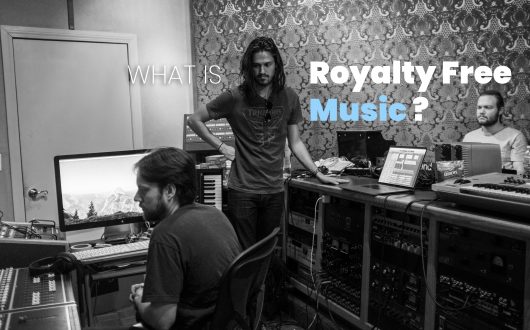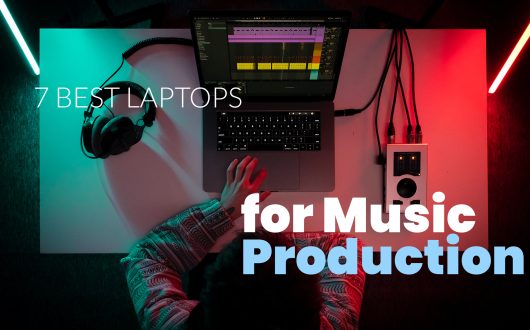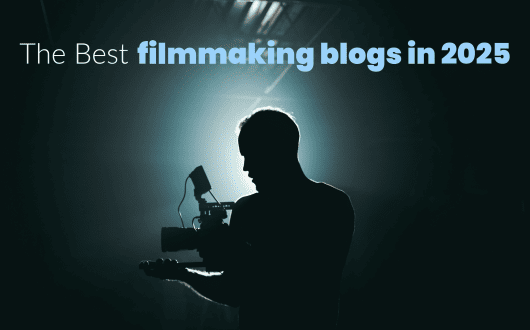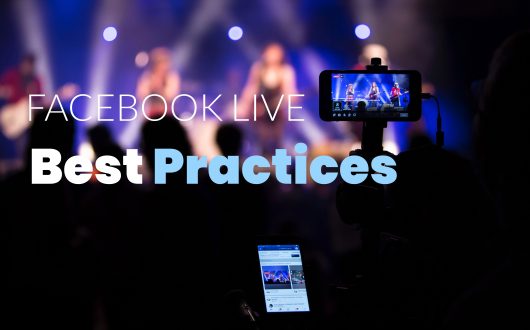
The Audio Buzz Blog

Music in Marketing: Take Your Marketing To The Next Level
Music in Marketing: How Music Can Take Your Marketing To The Next Level
We live in a world where genuinely unique ideas are scarce. Whatever you are doing or selling, it’s unlikely you are the only one, and chances are you didn’t get there first. If you can do or offer something that no one else can, you’ve got it made and don’t need our advice. But, if, like most, you’re competing for attention in a saturated market, you must give people a reason to choose you. You don’t need to be first or have a unique concept to succeed, but you have to be different. In this context, when selling your music or services in the music industry, different could mean better, faster, cheaper, easier, or a million other things. Whatever your different is, you need to let people know, and that starts with effective marketing.
The Relationship Between Music and Marketing

Photo by Simon Noh on Unsplash
The relationship between music and marketing is somewhat contradictory; it’s constant but fickle.
It’s constant in that music will always play a significant role in advertising but fickle in following current trends.
Music is always at the forefront of popular culture, and popular culture is a driving force in marketing.
But the relationship between music and marketing goes deeper than that; sometimes, it’s about following the latest trends, and sometimes, it isn’t.
Music can take your marketing to the next level, but you have to know why you’re using music and how you should be using it.
It’s easy to look at luxury brands and think that pairing slick imagery with a cool track is all it takes.
But the fundamental role of music in advertising is to reinforce your message; uber-cool advertising isn’t a necessity.
So, let’s go back to basics and discuss the role of music in marketing at the ground level.
What’s the Purpose of Marketing?
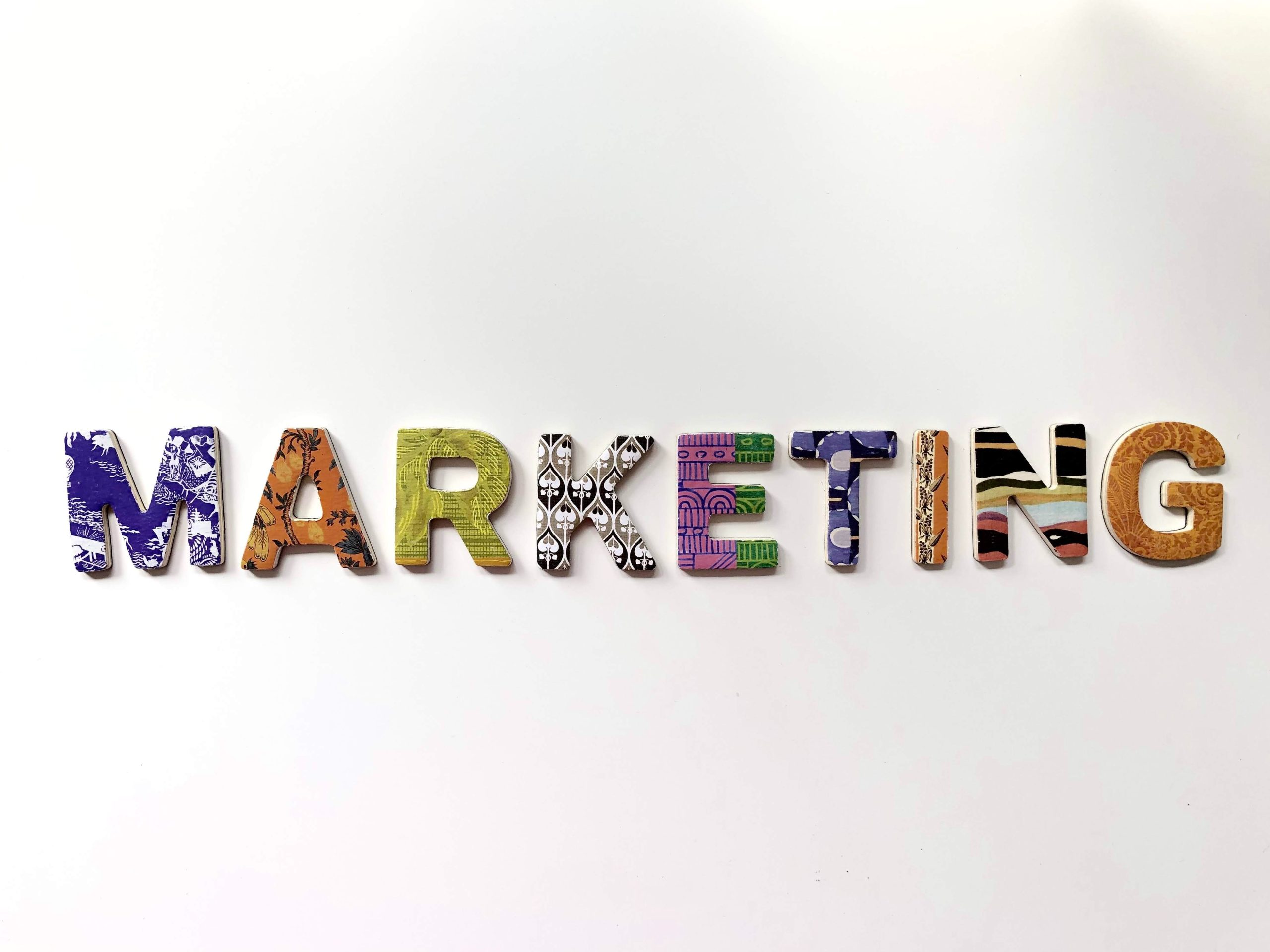
Photo by Merakist on Unsplash
Let’s start at the very beginning by discussing the purpose of marketing.
Marketing often seems like a dark art, too complex for anyone beyond the walls of the most expensive ad agencies to understand.
But you don’t need to be a marketing wizard to produce a successful campaign.
All you need is millions of dollars, luxurious locations, and at least one helicopter; anyone can do it.
OK, so you don’t need any of that; lesson one – never overcomplicate things.
If asked for the most straightforward answer to the question, what’s the purpose of marketing?
What would you say?
If your answer is much more than to let people know what you do and drive conversion, you’re overcomplicating things.
We can summarize the purpose of marketing with three clear goals:
- Let people know what you do
- Engagement
- Conversion
Higher engagement usually leads to higher conversion rates, but it’s essential to understand the difference between them.
It’s possible to generate extremely high engagement with a very low conversion rate if your message isn’t clear and concise.
Even big-budget advertisements will fail if they generate the wrong type of engagement.
You must have the right message and share it appropriately.
Artistic works such as films and games are slightly different; you don’t want to give everything away in marketing; you want to intrigue the viewer.
So, when we look at the three marketing goals, we must carry out each with purpose and intent.
We can break the goals down further to make it easier.
Let people know what you do.
- Get their attention – make sure they are looking and listening; that’s it.
- Introduce your product/service/work.
Engagement.
- Show the benefits/effectiveness of your product/service.
- Demonstrate why life is better/easier with it than without it.
Conversion
- Reconfirm the upside of your product or the potential downside of not buying.
- Show how easy it is to buy/join, etc.
There are exceptions to this formula (often artistic works as mentioned above), and we encourage a little rule-breaking when it comes to creativity.
Knowing when to break the rules is the trick, and our steps will keep you in pretty good shape for the rest of the time.
Creating a marketing campaign that explains what you do should be easy; standing out from the crowd is difficult.
Music is Powerful – Think of the Movies!
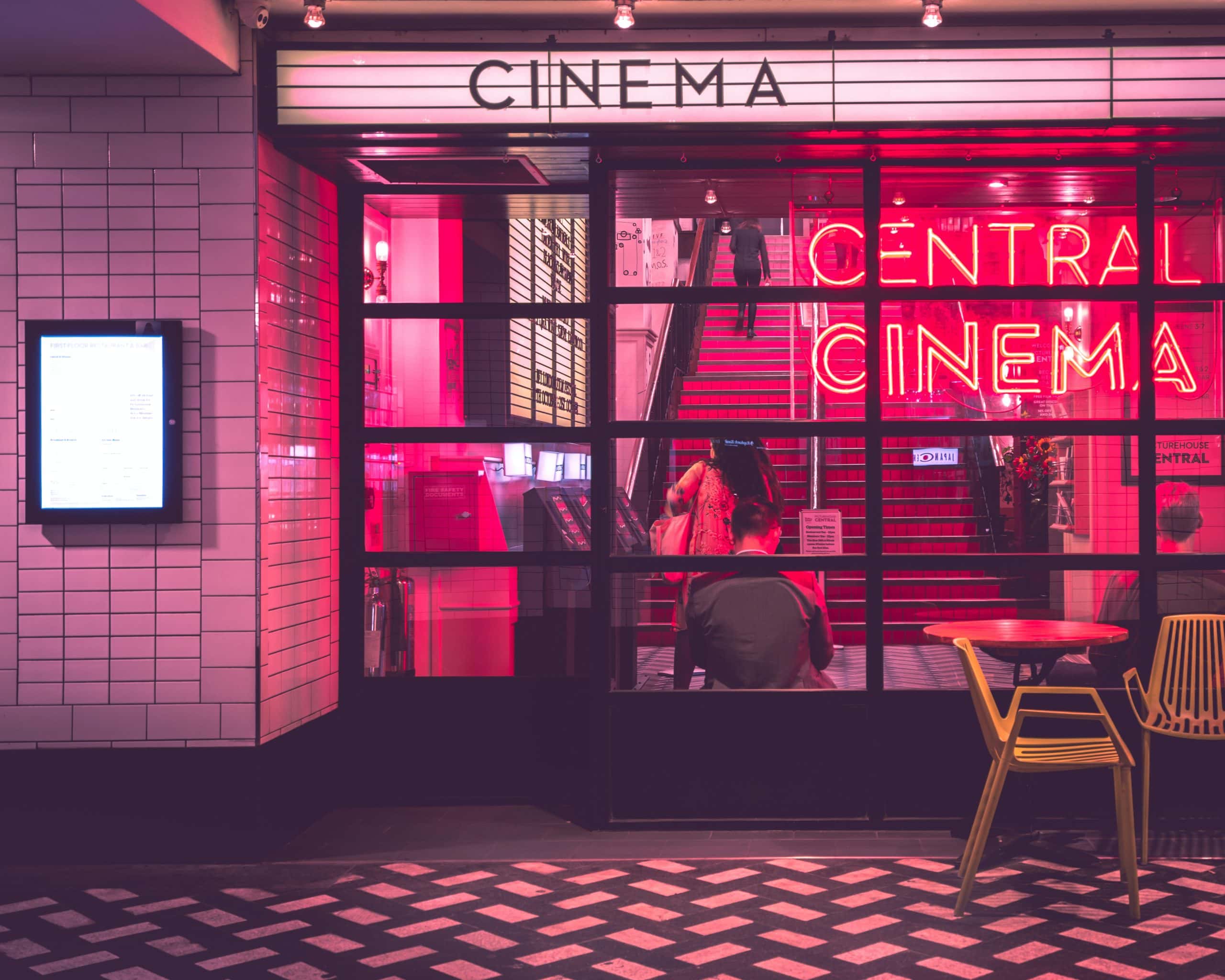
Photo by Myke Simon on Unsplash
Clever use of music is one of the most impactful ways to stand out from the crowd.
To illustrate the power of music, and in the spirit of keeping things simple, we want you to think of the movies.
We love certain movies because they make us laugh, cry, scared, anxious, happy, etc.
We relate to them on some emotional level.
Image is king in film, but music guides the viewers’ emotions more often than not.
It’s what tells us to feel anxious about what might happen or confirms whether we should feel sad or hopeful, and so on.
A great example of music guiding emotion in film is the final scene of Man on Fire (2004).
If you haven’t seen the movie yet, watch it from the start if you have time; the music is fantastic throughout.
The scene below tackles multiple drastically contrasting emotions.
The scene deals with fear, hope, relief, joy, happiness, contentment, sadness, pain, torment, and loss, and the music of Harry Gregson-Williams is both understated and powerful.
Now, imagine that the same scene starts and ends with a slap bass riff, not unlike something from a hugely popular 90s sitcom.
In that case, we suddenly have a very different result.
Instead of feeling sad or hopeful, it would be comically confusing.
Look at this clever mash-up as an example of how easily music can change emotion.
We’ve given some extreme examples and understand that marketing videos aren’t typically movie-length and don’t deal with such complex emotions.
However, understanding the impact of music in any video is part of the process.
What Music adds to Marketing
Emotion
Music drives emotion, just like it does in the movies, and it’s the one thing every use of music in marketing has in common.
When people buy something or choose to invest time in something, it’s an emotional decision; they do so because it makes them feel a certain way.
You could argue that many people choose products or services based on price, and that’s true.
But, even with price as the main criterion, whether your product is the cheapest or most expensive, you have to convince people it’s the best choice, and that means making an emotional connection on some level.
The right music can help you make that connection.
Direction
Marketing material is generally pretty short, but that doesn’t mean there’s no story to be told.
As an extension of what we said above, using music to confirm emotional intent helps create a clear and flowing storyline.
Music in advertising often mirrors a journey from metaphorical failure to success (from not owning to owning a product).
Brand Identity
Brand identity is often referred to as your brand’s public image, personality, or character.
It’s everything your brand says and displays, from your logo and color scheme to your stance on issues like sustainability, etc.
It’s everything that distinguishes your brand from another.
A strong brand identity means being instantly recognizable and providing a consistent customer/user experience.
It takes time to develop, but it’s something that you should think about from day one.
Music can play a couple of roles in developing brand identity, the most obvious being using an audio logo or theme music.
By theme music, we don’t mean the superhero kind; we just mean repeated use of the same music (or variations of the same theme) in all marketing videos.
Another approach is to consistently change the music you use, perhaps focusing on edgy styles or current trends; your brand identity would be that you’re known for experimenting or being on the cutting edge of music.
How to use Music in Marketing

Photo by Joshua Earle on Unsplash
We’ve looked at the role and impact of music in marketing, and we can now discuss practical ways to achieve our goals.
We set three marketing goals above (get their attention/keep their attention/Conversion), so let’s tackle getting their attention first.
Here are a few ways that music can help you get the audience’s attention:
Make noise – It doesn’t matter if your marketing video is showing on YouTube or National Television; it’s a waste of time if no one is looking and listening.
Let’s focus on YouTube advertising since that’s more accessible to any budget.
People don’t browse YouTube to watch ads, so you typically have a few seconds to get someone’s attention before they hit the skip ad button or use the time to grab a coffee.
In this case, the screen might be out of sight, and regular narration/dialogue may be out of earshot.
Furthermore, even if someone can hear the dialogue, it’s unlikely they will absorb it in any meaningful way, as they have already mentally tuned out.
Music is the perfect bait to get people on the hook when they are mentally tuned out; it turns heads.
If you can turn someone’s head and get them looking at the screen, it’s almost certain they will listen to your message.
For this very reason, many of the world’s leading brands use distinctive audio logos.
Audio logos go a step further; as well as grabbing someone’s attention, they enhance brand identity, which means even hearing it from another room is enough to register your brand in the listener’s thoughts.
One of the best examples of a successful audio logo comes from Intel.
Target your audience – You should already have identified your target audience, but music can help ensure you reach them.
Adding music is an excellent way to get more attention, but results aren’t guaranteed.
Adding music that’s popular with your target demographic is a great way to boost your chances of reaching your audience.
For example, if your ideal target age range is 15-19, Pop music should be more than twice as effective as Country music.
By using music your audience already has a connection to, you are more likely to get their attention and better equipped to keep it.
Keeping the attention: Now, let’s talk about keeping their attention.
Assuming you now have people watching and listening enough to understand what’s on offer, you must convince them not to switch off.
You need to engage with the audience to pique their interest even more.
There isn’t a universal solution to engaging with your audience; it differs from one project to the next.
But, we can identify a few broad areas of marketing and discuss some examples.
For the sake of example, we can assume that whatever you’re advertising falls into one of the following categories:
Entertainment – websites, YouTube channels, films, music, games, etc.
Product – a physical or digital product (music theory book, etc.)
Service – an online or in-person service (piano lessons, etc.)
Now that we have broad categories, we can identify ways to engage with the audience.
The examples below aren’t the only ways to use music in marketing, but they should help you develop a more comprehensive understanding of the process.
Entertainment
- Appeal to their sense of FOMO (Fear of Missing out)
- Create an immersive experience
Product/Service
- Highlight the problem more than the solution
- Highlight the upside of ownership/use
So, let’s look at how we can use music to engage with our audience in those ways.
FOMO
In the age of social media, things change so fast that almost everything in entertainment is in the spotlight for a relatively fleeting moment.
As a byproduct, people often feel a strong need or desire to stay on trend (no one wants to be the last to watch the latest blockbuster Netflix series).
If your project isn’t tied to one subject (for example, a travel blog covering many cultures and activities), letting pop culture dictate your choice of music is typically a good idea.
Look at trending music, films, and TV shows online for inspiration.
For example, if the number one show on streaming platforms is packed with 80s synth-pop, you can ride that momentum by using it in your video.
Immersive Experience
To create an immersive experience, we suggest you think about the movies again and how a soundtrack can guide the viewers’ emotions.
If you’re promoting something more specific, like a film or game, you should try to immerse the viewer in the action/story, as you’d hope to if they watched/played the complete film/game.
The difference is now that we’re dealing with a short promo, you can forget about the ups and downs in the story and focus on a general (overriding) emotion.
For example:
A Horror film/game – You want the viewer to feel uncomfortable and uneasy, almost daring them to see more.
A Tearjerker – You’d want optimistic or reflective music so the viewer is already rooting for the hero and wondering what they’d do in the same position.
It could be anything; if you have a Vlog about supercars, get some Classic rock and put the viewer virtually in the driver’s seat.
You don’t need to remember different rules for different film genres, games, and entertainment.
The key to creating an immersive experience is to make the viewer emotionally invested in one way or another.
Highlight the problem more than the solution
Many products or services exist because they offer the solution to a problem, but practical isn’t always exciting.
Let’s imagine the most mundane, uninteresting product, like a duster with a telescopic handle.
On the surface, it doesn’t seem like an advertiser’s dream, but it’s an ideal chance to focus on the problem more than the solution and introduce some humor to your marketing.
Think of how many comical ways you could show someone struggling to get to hard-to-reach places with a regular duster (stretching, jumping, ladders, etc.).
Now, think about adding some lighthearted, whimsical music, and you’ve got people laughing at a mundane but relatable problem.
Making people laugh at a problem that might usually be stressful creates a psychological connection between your product/service and the solution (less stress).
More importantly, you’ve got people thinking they must buy that duster with the telescopic handle.
If you can use music to help market something like a duster, you can do it with anything.
Highlight the upside of ownership/use
Whether trying to convince people they need or want something, you must make them believe they are better with it than without it.
In some ways, this approach is easier than most because the objective is so clear.
There’s a reason people in perfume commercials are always going to lavish parties or sailing on super yachts.
It’s the same reason people in car commercials always drive on picturesque roads or in empty cities at night.
This kind of marketing creates a perfect scenario that suggests customers could have the same if they’d only buy this product.
Of course, the reality is that they’d more likely be wearing expensive perfume while sitting in traffic on a school run, but everyone loves a little escapism.
If you’re dealing with escapism, you don’t want the viewer to relate to it; you want them to aspire to it, to dream, which means the music can be more epic or ethereal.
If you’re marketing a service that solves a problem and don’t want to go the comical route above, focus on showing how much easier or better life would be with your service.
In this case, the music should suggest calmness, satisfaction, and peace of mind.
In all similar scenarios, the music you choose should directly reflect the scene you are setting.
Now, you’ve held the viewers’ attention, and you need to covert attention to sales/follows/subscriptions, etc.
If you don’t have people on the verge of buying/joining/following by this point, music won’t save you.
However, you can use music to highlight the key points of your marketing in the following ways:
- Return to the main theme/hook of the music.
- Increase the music volume slightly if there’s no narration.
- Stop the music and sign off with a simple voice message.
It’s also an excellent time to return to any brand identity points, like an audio logo.
Where to Find the Perfect Music
You can find the perfect music right here in our library.
We have an outstanding collection of royalty-free music from incredibly talented composers, ready to take your marketing to the next level.
Whether you want music that mirrors the imagery, adds contrast, epic cinematic sounds, or cheerful pop, we’ve got it all.
Even better, you can audition it in our exclusive Video Preview tool to ensure you find the perfect match before buying.
We encourage everyone to make use of our Video Preview tool not only as a way to avoid wasting money but also as a creative assistant to experiment with different styles and genres.
Conclusion
Unfortunately, there is no golden rule for successful marketing; almost anything can be a hit or a miss, often without explanation.
What we can say for sure is that you should now be in a position to make better creative decisions that leave less up to chance.
Marketing is rarely a time to be vague; be clear, confident, and concise.




